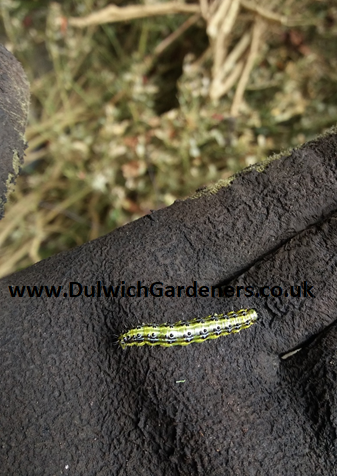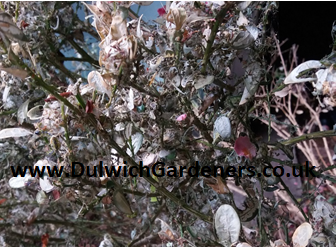Box moth caterpillar is a big problem to box owners in and around London. These are becoming more and more of a problem around Dulwich in recent years. They were first seen in traps in 2008 and by 2011 they were found in private gardens. Plants infected with the caterpillar or moth have been brought in and moved around. The moth can also fly short distances which also allows them to spread further.
How to get rid of box moth caterpillar



The caterpillar completely decimates box shrubs eating the green foliage and leaving the woody stems. Here is a photo in one of the gardens I work in where the shrub has been completely destroyed. While the caterpillars are small they cause an immense amount of damage in a short amount of time.

Identifying box moth caterpillar.
There are 2 stages in its lifecycle. Firstly the caterpillar then the moth. The caterpillar does the damage to the plants then pupates into a moth where it spreads and lays more eggs which hatch into hungry caterpillars. Here is a photo of the caterpillar from an established infestation in South London.

You will first notice damage to your plants. Sometimes you will see the caterpillar but usually by that point the damage is done. Often you will see silky fibres produced by them during autumn, which offers them protection till the spring. Here is a close up of a damaged plant.

While the box moth caterpillar is in limited areas, it will continue to spread. I think that eventually it will spread across the UK. If you are close to an area that is infected with box and are considering planting box shrubs, I would suggest looking to some alternative plants which can be used instead. Box is an expensive shrub so it may be wise looking for different plants to get the same result. Other plants to consider are Japanese Holly, Euonymus japonicus or Purple Berberis.
As an Amazon Associate I earn from qualifying purchases